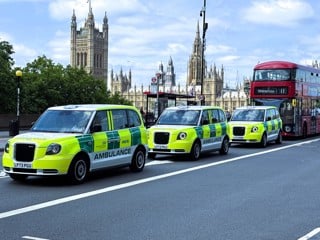The first phase in the programme is the biggest, and offers the greatest savings – for Essex-Kent and for police forces across the UK.
“Collaboration principles are driven by standardisation – the vehicle types and how they are used,” Gorton says. “We have to work with the officers to standardise their practices.”
He is the champion behind the police’s national benchmarking programme. Used by 49 of the UK’s 52 forces, it helps to identify the most cost-effective use of vehicles.
“Benchmarking is about collaboration – forces working together to reduce the differences between the worst and best forces by sharing information and best practice,” he says.
“If we do it nationally, we can also do it locally with neighbouring forces.”
The programme has shown that savings from running costs are becoming harder to achieve. The gap in pence-per-mile figures between police vehicles and general company car equivalents has closed.
That, says Gorton, “is something we are very proud of, considering that police vehicles are arduously worked”.
It has also further precipitated a move towards national collaboration and standardisation, feeding data into an Association of Chief Police Officers working party looking at the operational needs of vehicles.
“If we can get a standard requirement, then NAPFM can look at standard builds and designs across the UK,” says Gorton.
“Then we can increase our procurement power and efficiencies. It also links into safety – we will be building the ideal vehicle.”
Although Gorton’s first stab at a collaborative programme was aborted due to the overly ambitious bid to bring together four forces concurrently, he believes the Essex-Kent model could support further additions.
“Once you get two forces working together, it’s easier to get a third to join because they will be joining an existing structure,” he says.
As a former London Fire Brigade fleet manager who progressed to Essex Police via the Met, Gorton has seen his responsibilities develop and accountability rise over time – both for the better.
“Fleet-managing emergency service fleets is a blend of old-fashioned fleet manager key principles and cutting-edge fleet management,” he says.
“Gone are the days when we simply bought and disposed of vehicles –now it’s strategic management.”
Like most of the UK’s police forces, Essex and Kent outright purchase the majority of their vehicles – less than
10% are leased
Buying outright removes the uncertainly around marked police vehicles whose residual values are difficult to predict at the end of the life-cycle – that is, if they even make through to end of life.
A contract hire company taking on such a high level of risk would make the rental costs prohibitive.
However, Gorton does not rule out dipping further into leasing in the right circumstances.
“There may be an opportunity around unmarked, low usage vehicles,” he says, “but they are still hard to predict because there might be operational changes that affect the utilisation of the fleet.”
Sudden changes mean police fleet managers need to be nimble: a car that has been doing 12,000 miles a year might now do 30,000 due to organisational changes.
“It’s critically important for the fleet manager to talk to operational heads,” says Gorton.
“It’s about acting as a bridge to maximise the utilisation of the fleet for efficient policing.”
Managing road risk
Essex Police has a three-pronged approach to managing road risk:
1 The vehicle The right vehicle, designed for purpose and properly maintained
2 Driver training Includes a collision reduction unit within the driving school that re-trains staff based on black-box data. It’s a tailored approach rather than blanket one-size-fits-all.
3 Operational deployment Deploying cars and drivers under the right circumstances and ensuring that the expectation of officers is not higher than either the vehicle or driver can deliver. A key part is involving the driver at the outset in the selection of the vehicle specification.
Factfile
Head of transport John Gorton
Fleet size 1,960
Funding method Outright purchase
Replacement cycle Varies depending on the vehicle usage: response vehicle 130,00 miles/4-4.5 years; traffic vehicle 150,000 miles/3-3.5 years; CID 100,000 miles/six years
Other info Gorton is chair of the national benchmarking programme at NAPFM and also sits on its executive and procurement committees



















Login to comment
Comments
No comments have been made yet.